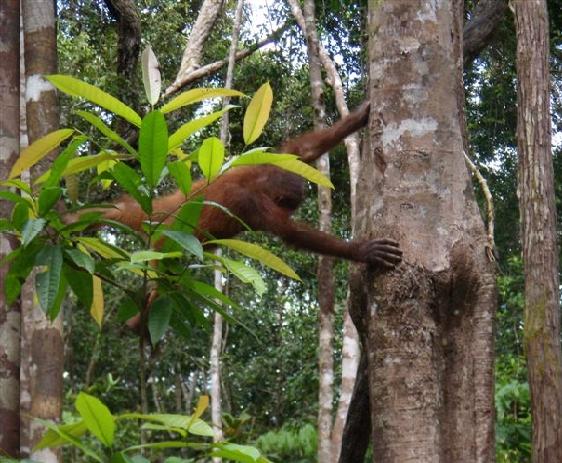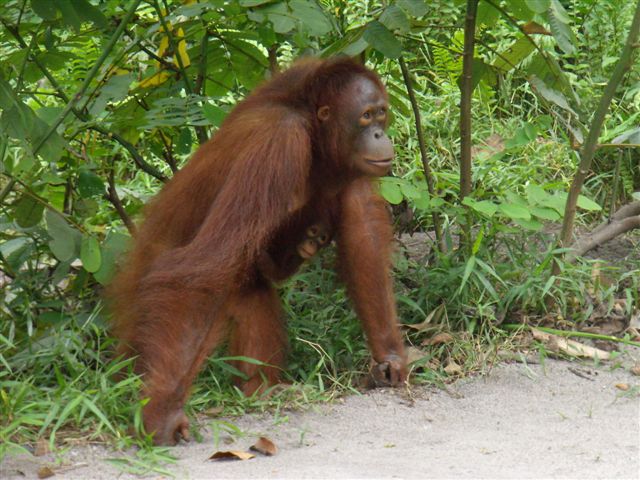Monitoring released orangutans
I see a number of people have asked how we monitor the orangutans once they have been released into Lamandau. There is nothing technical involved: our field assistants follow the orangutans from sunrise to sunset (or as we say, "nest to nest") everyday for a week. If after that time it is clear the orangutan has adapted to life in the forest, they will then be followed occasionally like the other previously released orangutans. If after the first week, the assistants are concerned that the orangutan may not be adapting they will continue to follow he or she for a month. Common causes of concern are the orangutans not making their own nests but choosing to sleep on the feeding platform or making a bee-line for Camp and not exploring their new surroundings. Within the first week, we expect to see the orangutans making their own nest, trying wild food and travelling. Nearly all achieve this.
Most newly-released orangutans tend not to go too far in the first couple of days but then they start to travel further and further. Last December I told you about the release of Sawit and her adopted son Andi. They took off within their first week, probably because Sawit was being hassled by a sub-adult male. The Assistants could not follow her through the swamps to the west of Camp Rasak. However, on 22 April, back they came, still together.
Which brings me onto the last element of the post-release monitoring; the daily supplemental feedings. In Tanjung Puting, where orangutans were released from the early 1970s to the mid-90s, the rehabilitants are offered food once a day. In Lamandau food is provided twice a day. This serves three purposes: it keeps up the nutrition levels of the released orangutans; it decreases competition for scare food resources with wild orangutans, gibbons, hornbills, and other wildlife and finally it enables us to monitor the orangutans’ development. All individuals coming to the feeding stations are recorded; over the course of a year, at least half of all released orangutans are seen. The Assistants also note whether they are consorting with the opposite sex, pregnant or with an infant and their general health.
For example, Boni who was released at the same time as Sawit and Andi came into feeding 26 times during April, and then every day in May and June. Lady Di, whose picture I showed you in April, was around for 28 days in April, May and June but Hongky was there for just 9 days in April, 14 days in May and 25 days in June.
In answer to “Rick, El Paso, TEXAS” question about the availability of this data, I am afraid to say it is not available online. We produce quarterly reports, in Indonesian, covering this information but the reports are for the Forestry Department and our own internal use. However, Tigor who manages the Lamandau Camps is providing information about our release program to an Indonesian PhD student at Cambridge University in the UK. So hopefully it will be peer-reviewed and published.
Please keep asking questions and I’ll try to keep answering them! Many thanks.



